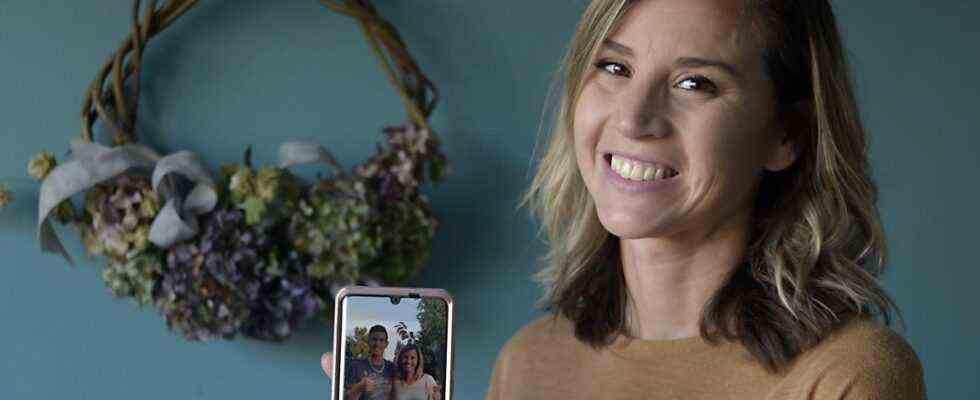How do you meet a lifesaver? Julia Gasser, 35, asked herself this after the two years had passed after the stem cell donation that was used to treat her leukemia. She was now allowed to contact the donor. After he had also expressed interest in getting to know each other, the Bavarian Bone Marrow Donation Campaign sent both of them the contact details by email at the same time.
Exactly on the day her nephew started school, on September 14th, Julia received a text message. “Hello Julia, this is Marco, your donor.” She didn’t answer right away. “I didn’t know how to tell him who I am,” remembers Julia Gasser. She felt the need to tell him about the time, about the two years after he had donated his stem cells. “So I made a video out of photos.” Among other things, there was a picture of her husband shaving her bald head, but there were also many from the time when she was slowly getting better. A little story in pictures.
Then Marco was speechless for the time being, reports Julia. But after a little respite, he too sent photos. One of them particularly touched Julia: It showed Marco fishing with his son. “My husband goes fishing with our son too,” replied the mother of twins. And there were even more similarities. Marco and his wife also have twins, Marco has the same job as someone from Julia’s family. And the best thing about a donor database that includes people from all over the world: “He lives only an hour away from us.”
She has ten matching HLA characteristics with Marco, even more than with her siblings
Many little miracles that touch Julia. She came to Germany with her parents from Kazakhstan in 1996. “And so this is where I find my genetic twin.” She has ten matching HLA characteristics with Marco. These are structures on the cell surface that indicate to the body whether it is the body’s own or foreign cells. So that the foreign cells are not rejected after a transplant, the characteristics of the patient and the donor must match as closely as possible. “Ten out of ten, that’s a match,” says Julia. This was not even the case with her siblings; with one brother she had 50 percent agreement. In a pinch you would have tried that, but Marco was better.
She met him on October 2nd. After her husband Manuel asked her again and again how she could imagine getting to know each other, he arranged this without her knowledge. He pretended that friends would come over for a barbecue on that sunny autumn afternoon, a Saturday. “I went out of the living room onto the terrace,” remembers Julia Gasser. And then she saw “Marco and his wonderful family”: him, his wife and the four children. From the photos she recognized him immediately and a feeling of happiness flowed through her. It was instant sympathy, one another.
Marco’s wife later told Julia that he was a little afraid of the meeting. “What if it doesn’t fit?” He asked. But his wife replied: “Marco, she has your DNA, it has to fit.” And she was right. Everyone was talking a lot that afternoon. Marco reported on April 1, 2019 when he went to donate. Before that, he had to inject himself into his stomach three times a day for a while, “so that the stem cells can be produced,” explains Julia. On the day of the donation, he sat in a chair with needles in both arms for four hours. His blood ran through a machine that sorted out the stem cells and then flowed back into his body.
On April 3, 2019 Julia sat there and received Marco’s stem cells. “You don’t immediately feel superpower,” she says. There were many more weeks in the hospital, many rejection reactions in spite of the great agreement, she got burning rashes, diarrhea, and had to take 20 tablets a day at first. “I had a moon face from cortisone for months,” she recalls. In 2020, when the corona pandemic broke out, she was doing very well. And for them the hygiene measures were perfect. Because their weak immune system had to be protected, an infection would have been life-threatening. She wore a mask since 2018.
She is doing very well today. She no longer has her old blood type, but Marco’s, zero, sees him as a kind of blood brother, as she says. “I can eat anything again,” she says happily after having been banned from anything raw for a long time. “That was very exhausting.” In general, she had been exhausted for so many months, sometimes “too tired to get up from the sofa”. Thanks to Marco, that’s over. “Now my energy is back and I want to be in 100 places at the same time.” Soon she and her husband will be back where Marco and his family are. Because the new friendship with the “genetic twin” should definitely continue to be cultivated.

